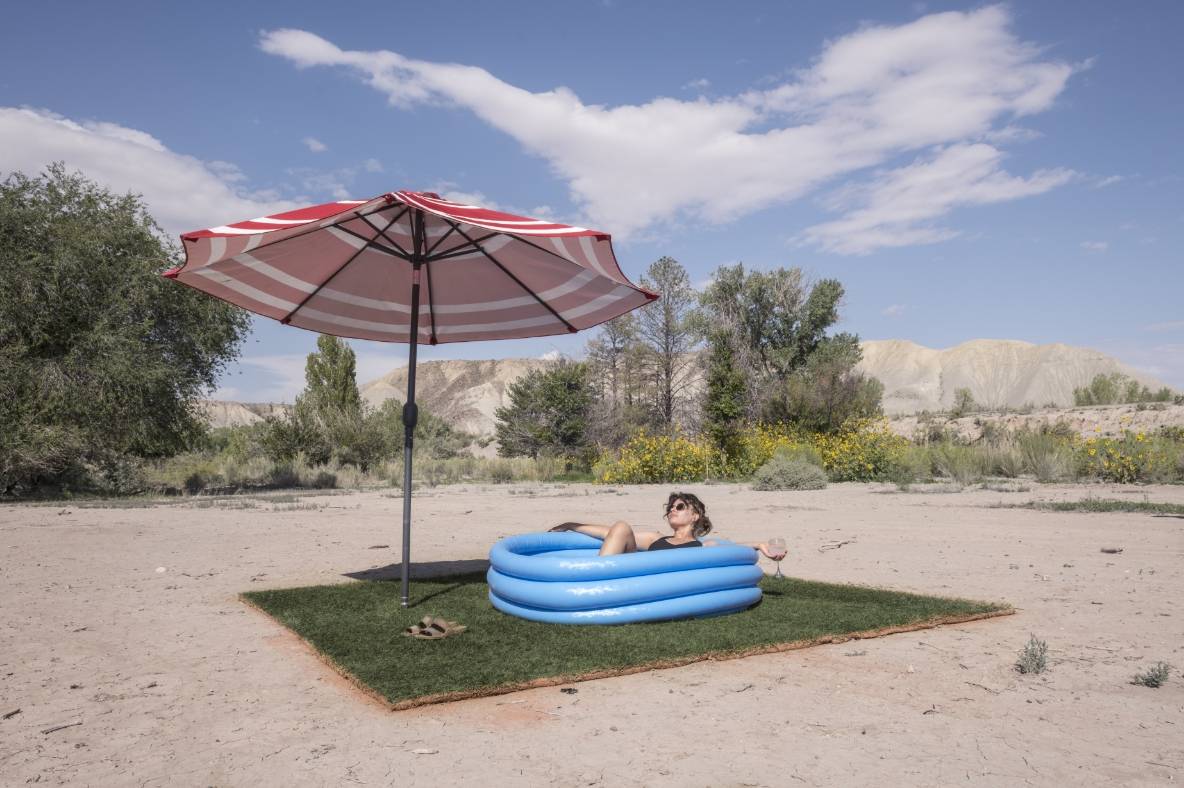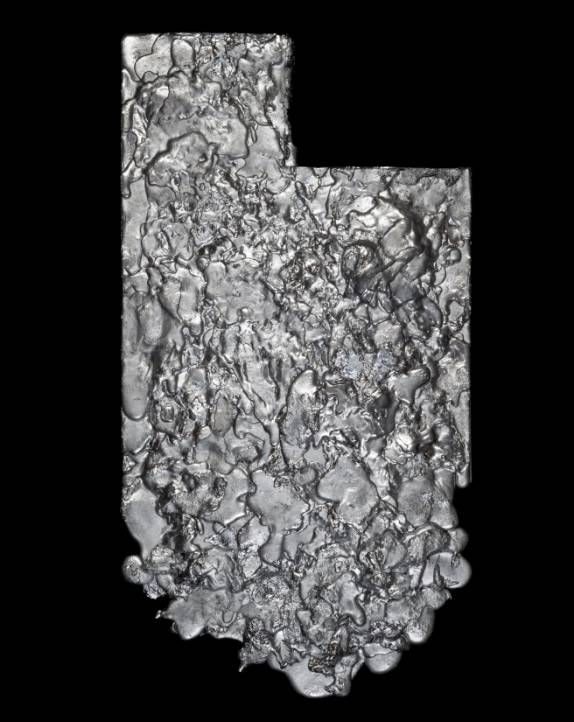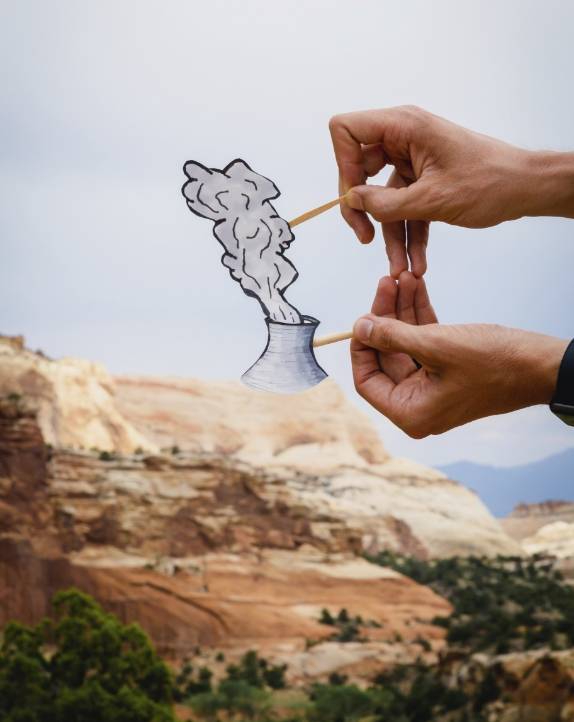
This is the sixth in an ongoing series of annual fine art books created, designed, and produced by UVU’s Art and Design Department. Its title, 乌有之乡, simultaneously represents the universal questions students explore in the book as well as the sole focus and location for the artwork: their home state of Utah.

肯尼亚Heiner

霍华德Fullmer

迈克尔·赫尔曼
A few years ago, an academic experiment began to conduct a multi-disciplinary collaboration between faculty and students in the Department of 艺术与设计 at 犹他谷大学. Our end goal has been to create a fine art book that showcases the creativity, innovation, and ingenuity of our department. It is a carefully orchestrated performance for visual artists. Approximately one year is spent on each project in researching, traveling, creating, designing, and editing. 乌有之乡 is our sixth publication in this series with all proceeds from book sales directly funding the publication of future engaged learning experiences for our department. Each prior book has received recognition in state, regional and national competitions from organizations such as Independent Publishers Book Awards, PPI PrintROCKS!, DesignArts Utah, AIGA 100 Show SLC, and 打印 magazine.
这本书的构思和执行充满了不确定性。 The COVID-19 pandemic was still tainting all aspects of everyday life and we did not know what would be allowed and what would be safe. Extensive travel did not appear viable and vigorous attempts at coordination seemed doomed to fail. We elected to stay as close to home as possible and instead of relying upon a historical theme or a literary reference we gave students a simple prompt to focus their creative efforts around; how do humans interact with their environment. 我们还添加了一个暂定标题Abstract Utah。 Other than those prompts, we did not give editorial direction. Instead, we worked to provide opportunities for the students to see the state and then relied upon them to observe, contemplate, and then create based on what they responded to.
关注人类对环境的影响有一些潜在的缺陷。 Discussions about the environment have become tainted due to the volatility of our political climate. We advised students to acknowledge that we are not scientists, economists, politicians, or any other entity that can directly address these issues on a large scale. Artists and their art succeed by raising questions and challenging traditions; by providing opportunities to think. Attempt to raise questions with their art, rather than presume to have the answers.
我们采用了不同的方法来组织和设计这本书。 We took all the artwork, after it had been created and submitted, then presented it to Courtney Davis, the Dean of the 艺术学院. Dean Davis is an art historian and we asked her to examine the artwork through the lens of an historian. She perceived ten themes or approaches present in the artwork and wrote ten insightful essays to correspond with her observations. We took those ten essays and used them as chapters and curated the work based on her insights.
Another variation that we introduced, compared to previous books, was the addition of artist spotlights. Some students and faculty refined their concepts to a greater degree and as such, we created artist spotlight spreads where the individual artists could share their thoughts and have more involvement in image selection and design decisions. These spreads will have the artists name, their discipline, and a project statement coupled with a selection of their artwork. The reason for this was to provide further context. Art can be left on its own to engage with an audience or, context can be provided to help inform how the artwork will be interpreted. We are doing some of both.
The title, 乌有之乡, was chosen to emphasize a dual meaning. Using the dictionary definition of utopia (a place of ideal perfection) coupled with the abbreviation “UT” for Utah. Throughout history, people have worked to make where they live the best they can. The subtitle, 抽象状态, emphasizes the quality of dealing with ideas rather than events as well as being free to depart from representational qualities in our art. It also references an additional meaning where the state of Utah was the sole focus and location for the artwork. The questions we contemplated often are universal, but we elected to keep this reflection close to home. As expected, we observed areas of success, areas of failure, and areas that we may simply disagree with. It gave us a lot to contemplate, and we hope it will provide ample food for thought for you as well.